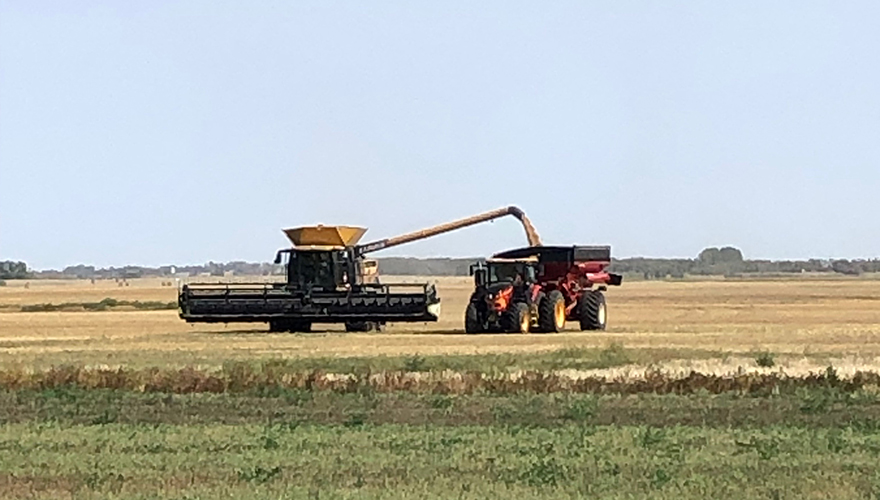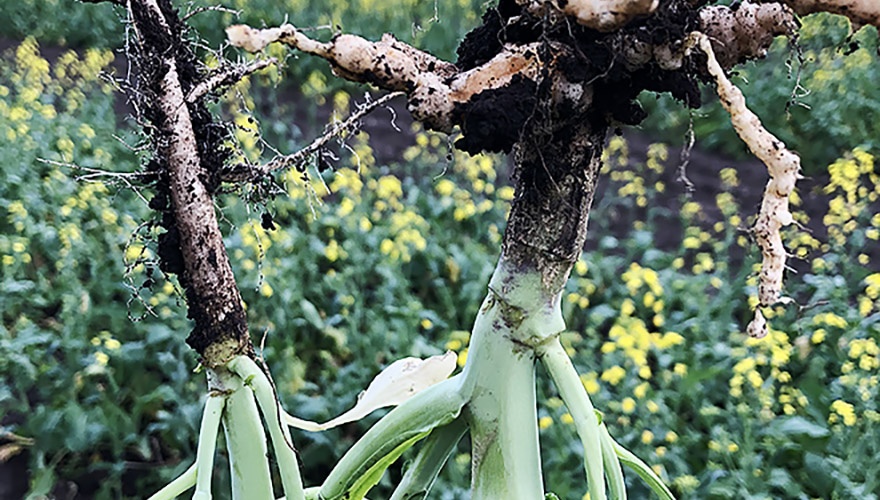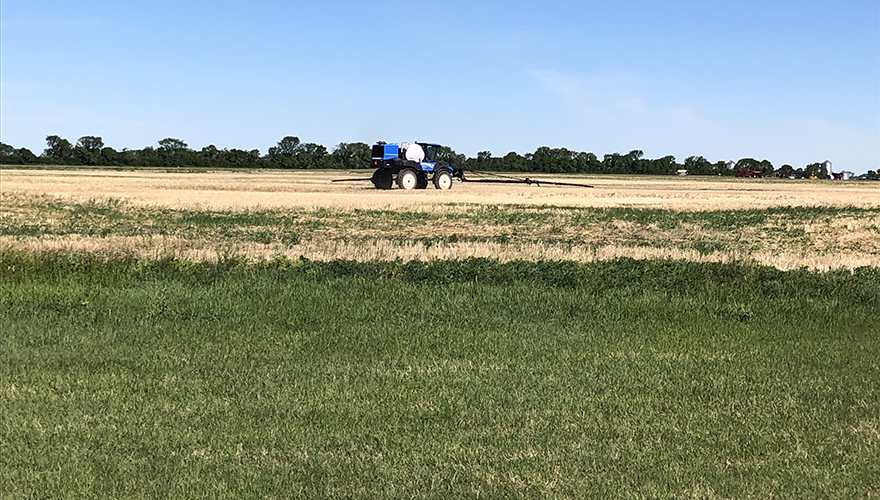Posted December 11, 2019
Understanding Canola Harvest Management Options
Farmers have varying expectations for harvest management/straight cut canola hybrids versus the traited pod shatter products and knowing how these hybrids fit into a farmer’s seeding, harvesting and risk management program is crucial.
Swathing was and still is a common practice in canola production, mainly because past canola cultivars have not always had strong pod integrity and could be subject to pod shatter and pod drop which can lead to large losses prior to harvest. Pod shatter-labelled hybrids have changed all that.
“Pod shatter-labelled hybrids such as those offered with the P designation from BASF have a patented pod shatter reduction trait in them,” notes Scott Anderson, manager of agronomic services with Nutrien Ag Solutions in Saskatchewan. “This trait strengthens the pod seam leading to a strong reduction in pod shatter, and hybrids with this patented trait have consistently high levels of pod shatter reduction.”
Meanwhile, harvest management canola varieties now exhibit increased resistance to pod shatter and pod drop compared to other non-pod shatter or non-harvest management hybrids. These increased resistance traits are selected through cultivar evaluation in a breeding program without singling out a specific trait.
“Typical harvest management hybrids that are in the marketplace right now do have a certain level of increased pod shatter resistance which the old standard varieties didn’t have,” says Alan Grombacher, senior breeder with Nutrien Ag Solutions in Saskatoon. “What those varieties bring to the market is they give the farmer a bit of an advantage on how they can manage their crop in the end. The farmer can either straight cut the material or swath it. But if the farmer is going to straight cut it and leaves it standing, there’s a time period where that material will stand fairly well and won’t suffer increased seed losses due to pod shatter and weather.”
The pod shatter varieties increase pod integrity, allowing the canola to stand in the field longer without suffering undo losses, adds Grombacher. But, there’s still a window that, if exceeded, will cause issues. “With the true pod shatter varieties, that window is extended over the harvest management materials quite a bit. Meaning it’s a tighter pod, it doesn’t crack as easily.”
Straight cutting eliminates the swathing operation, saving the farmer time and wear on equipment as well as helps manage uneven maturity. Farmers need to ensure the selected harvest management or pod shatter hybrid has the other desirable agronomic traits such as clubroot resistance if needed or suitable maturity for their growing zone.
The main disadvantage of straight cutting is the need for a more uniform stand and maturity of the crop and potentially higher horsepower requirements when harvesting as there can be more green stalk material to put through the combine, although the pods and seed are ready. There are harvest aid products on the market to help manage plant dry-down but they are somewhat dependant on environmental conditions in fall.
“Harvest management really refers to exactly that, a management program where under appropriate conditions such as a uniform crop with relatively even maturity, these hybrids will work well to swath on the later side or straight cut,” says Anderson. “Swathing in the 60 per cent seed colour change stage gives larger seed with less shrinkage, thereby leading to higher yield potential with less green seed risk.”
Harvest management hybrids should be exactly that, managed. With normal growing season conditions, these can fit well into a straight cut program with even maturity and sufficient plant stand throughout the field. Harvest management hybrids should be harvested as soon as they are ready to combine to avoid having too many adverse conditions such as high winds, hail or snow when they are ripe as nothing is completely shatter proof.
“Under variable field conditions experienced in many areas this year, it was a prudent choice to swath due to the high variability we saw in crop maturity,” notes Anderson. “This still allowed farmers to let the more mature areas stand a bit longer and for the less mature areas to come along to an acceptable stage for swathing without experiencing shattering losses.”
Use of harvest management or pod shatter hybrids gives farmers more flexibility in the fall around either swathing timing or the potential opportunity to straight cut. Seeding rates should always be targeted to give a uniform plant stand of at least five to seven plants per square foot, as a uniform stand has a better ability to resist excess plant movement in fall which can lead to shatter losses.
“Growers will still need to evaluate the stand near harvest to determine their best avenue of either swathing or straight cutting the crop,” says Anderson. “Pod shatter resistant or harvest management hybrids widen the swathing window and give the flexibility to manage the crop to the year.”
FEATURED LINKS
NEWSLETTER
Want to stay caught up in all things agriculture? Sign up for the newsletter and get all the latest news straight to your inbox.
Crop Planing Tips
Posted January 03, 2020





